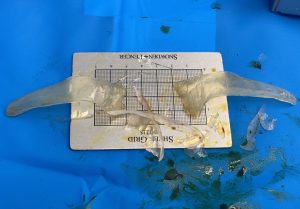Custom designed implants have provided completely new types of facial augmentation effects not thought previously possible. This is particularly true in the cheek area where various oval-shaped implant styles are available as standard options. These create malar-submalar fullness over the anterolateral aspect of the cheekbone often called an ‘apple cheek’ effect. But such an aesthetic midface effect is not desired by every patient particularly men.
The most common custom cheek implant style is the infraorbital-malar design. This creates a horizontal line of augmentation from under the eye out onto the zygomatic arch. This high cheekbone look follows the skeletal pattern of the bone hence giving it its name. But like all types of cheek implant the most critical or sensitive area of augmentation is where it turns the corner from the undereye to the zygomatic arch. This is somewhat similar to the most projecting point of a chin implant. It is the determining of whether a patient feels the implant is too large or not.

Experience in modifying custom facial implants comes from a learned experience in longitudinal shaving techniques with large scalpel blades of either #10 or #20 size. Long passes of the blade on the implant that has been compressed on a flat metal surface is the key to a relatively smooth and even surface.
Dr. Barry Eppley
Indianapolis, Indiana


